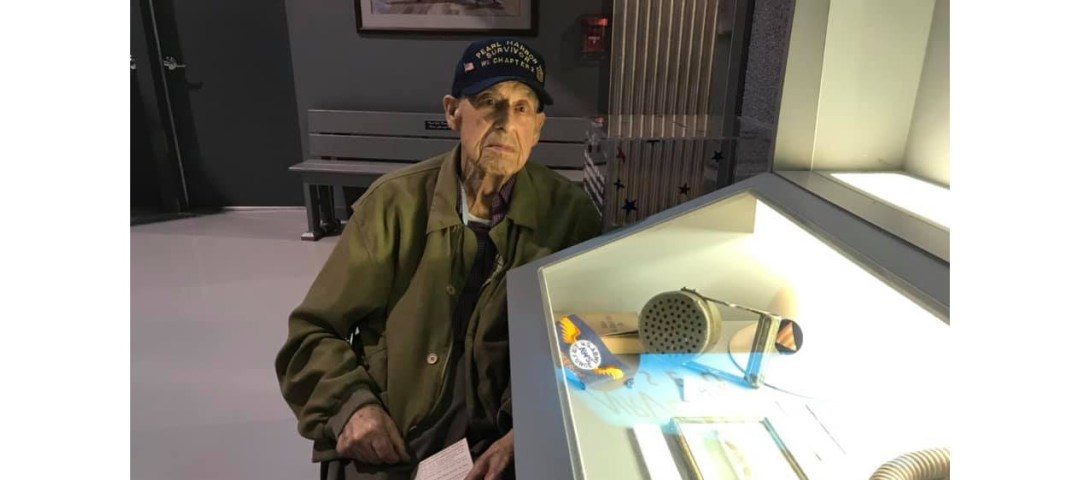In 2016, EAA hosted a reunion of Pearl Harbor survivors. This event was held to commemorate the 75th anniversary of the attack on the Hawaiian military installation. It was while working to plan this event that I first met Wisconsin native Clyde Stephenson. Clyde was a Marine, or shall I say “is still a Marine.”
He set up a meeting with me over at the terminal building on the field. When I arrived, there was a wheelchair sitting in the room but he was sitting in an office chair. As we prepared to leave the room, I asked if he needed help to his chair. He stood up with a proud and perfect posture and said, “That is not my chair.”
As we began to discuss the plans for the day, I asked him if he could tell me what it was like at Pearl Harbor.
“Well, I was assigned to the USS California,” he said. “That morning we were set up at a target range firing machine guns.” Clyde told me that he had gone into his tent to get something and when he came out he could hear airplanes. He looked up and spotted several Japanese airplanes. They fired on the low-flying aircraft as they flew by his encampment.
“We were the first shots fired back at the attackers,” Clyde told me. Officially his group was credited with four aircraft destroyed.
Clyde later received a piece of the deck of the USS California, which was replaced when the repairs from the Pearl Harbor attack took place. He would go on to serve in major battles across the Pacific, including the Battle of Peleliu, before coming home to his wife, Elayne.
Last week Clyde died at the age of 99. He had been a great supporter of any World War II programming EAA created. He and his family saw it fit that his piece of the USS California be brought to the Eagle Hangar of the EAA Aviation Museum for permanent display, where it is now. I am thankful for my time with Clyde, and thankful that people like him existed to preserve our way of life.


